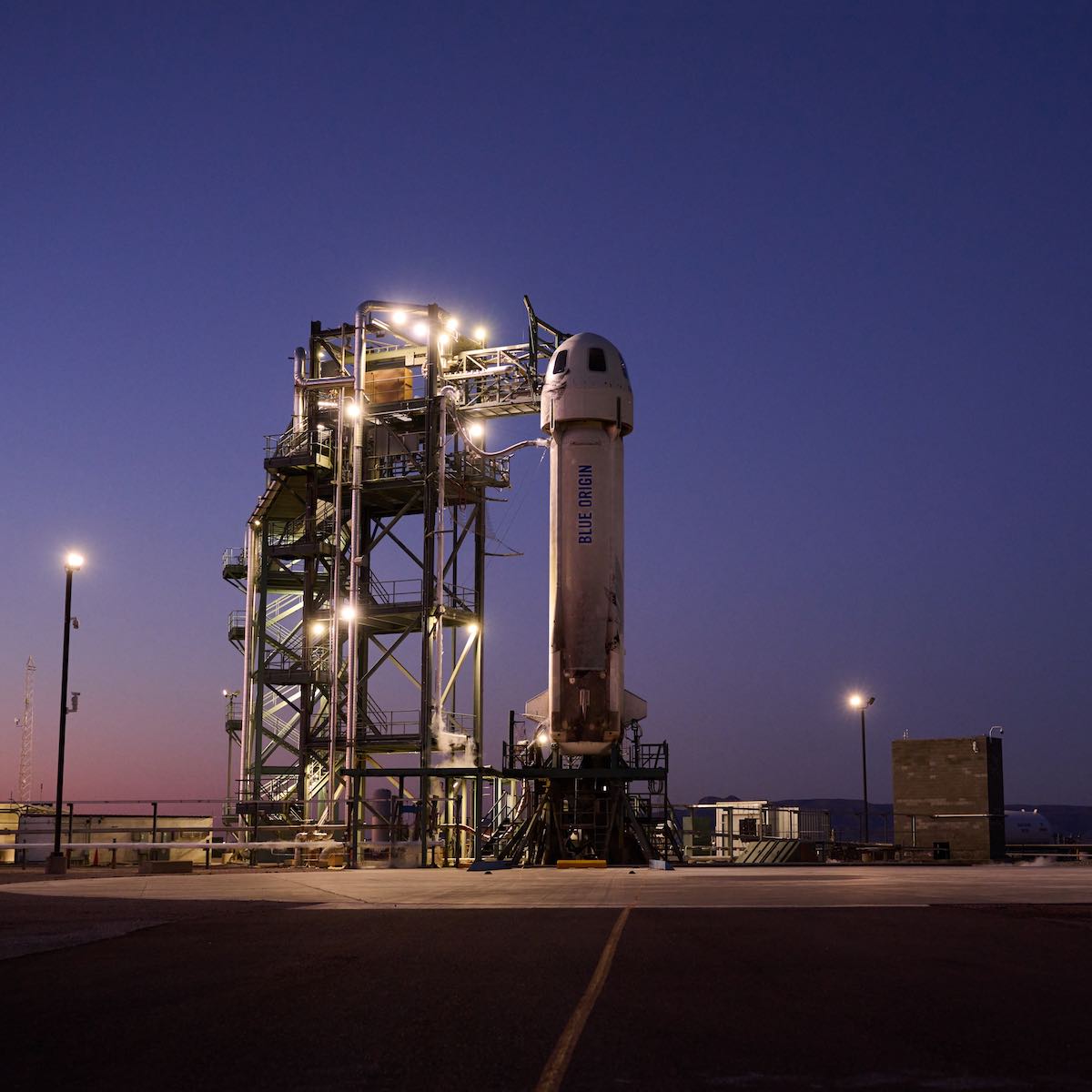Blue Origin is set to launch its New Shepard suborbital rocket from West Texas to space Monday, but this time it will fly without any human passengers. The booster and capsule will loft 36 payloads from research institutions and student organizations, half of which are funded by NASA.
The launch from Blue Origin’s West Texas test site is scheduled for 9:30 a.m. EDT (8:30 a.m. CDT; 1330 GMT). Blue Origin initially planned to launch the mission Aug. 31, but poor weather forced the company to call off launch attempts on three consecutive days. Officials then rescheduled the launch date for Monday, Sept. 12.
The suborbital flight will soar into the rarefied uppermost layers of the atmosphere, targeting an altitude just above 60 miles (100 kilometers), the internationally recognized boundary of space. The mission, numbered NS-23, will mark the 23rd flight of a New Shepard rocket, and the ninth flight of this reusable booster, paired with the crew capsule “RSS H.G. Wells,” also making its ninth trip to space.
Blue Origin has launched six flights to space with human passengers since July 2021, when company founder Jeff Bezos joined three others on a suborbital launch. Most recently, the company sent six passengers to suborbital space Aug. 4, using a different booster and capsule in Blue Origin’s fleet.
The booster and capsule slated to launch Monday is dedicated to flying science and research payloads to space, according to Blue Origin.
The New Shepard rocket will fire off its launching stand with 110,000 pounds of thrust — more than a million horsepower — from its hydrogen-fueled BE-3 main engine.
After firing more than two minutes, the main engine will switch off and the crew capsule will separate from the New Shepard booster after reaching a maximum speed of more than 2,000 mph (3,000 kilometers per hour). The capsule and booster will coast to apogee, the highest point of the flight, before falling back to Earth.
The booster will deploy air brakes and reignite its BE-3 engine to slow down for landing on a concrete pad a couple of miles north of its launch site. Moments later, the crew capsule will open three main parachutes and fire its own small retrorockets for touchdown on the desert floor at Blue Origin’s sprawling 80,000-acre test facility.
The entire mission will last about 10 minutes from liftoff until touchdown of the capsule.

The 36 payloads flying on the NS-23 mission include hydrogen fuel cell technology developed by Infinity Fuel Cell and Hydrogen Inc., a company based in Windsor, Connecticut, with a NASA-funded contract to develop an Advanced Modular Power and Energy System. The AMPES fuel cell technology could be used to generate power for future lunar rovers and surface habitats, and Blue Origin’s launch will allow engineers to test some of the hardware in microgravity.
Another NASA-funded experiment on the New Shepard flight Monday comes from Honeybee Robotics, a subsidiary of Blue Origin, and will study the strength of planetary soils under different gravity conditions.
An investigation from the University of Florida will test a fluorescence imaging system that enables biological research on suborbital missions, and researchers from MIT Media Lab are flying an experiment called “Wax Casting” to test how future explorers could produce their own non-toxic solid rocket propellants in microgravity, such as paraffin and beeswax. The Wax Casting experiment will study how melted candle wax and a similar liquid called heptadecane react when they are rotated in tubes aboard the New Shepard capsule.
The Electrostatic Regolith Interaction Experiment from the University of Central Florida, also supported by NASA, will study the behavior of charged dust particles in microgravity. Information from this experiment could help engineers develop strategies to prevent lunar dust from damaging electronics, solar cells, mechanical equipment, and astronaut spacesuits on the moon, according to UCF.
There’s also an experiment on the NS-23 mission from NeoCity Academy in Kissimmee, Florida, where six high school students developed an investigation to study the effects of microgravity on ultrasonic sound waves. Another project from Anatolia College in Greece will attempt to create a painting in space.
Two sensor suites flying on the New Shepard rocket will measure data on the environment outside the vehicle. A fiber optic sensor system developed by NASA’s Armstrong Flight Research Center will monitor the structural health of the vehicle, collecting temperature and strain data on the NS-23 mission before future use on orbital launch vehicles.
A space sensor platform from Johns Hopkins University’s Applied Physics Laboratory is also mounted on the New Shepard booster. It is designed to study environmental conditions in the lower ionosphere, a difficult-to-study region of Earth’s atmosphere. Scientists hope to expand the platform’s capabilities on future flights to include telescopes, cameras, and deployment of small sensors, according to Blue Origin.
Email the author.
Follow Stephen Clark on Twitter: @StephenClark1.
from Spaceflight Now https://ift.tt/jAz9JrI
via World Space Info







0 comments:
Post a Comment